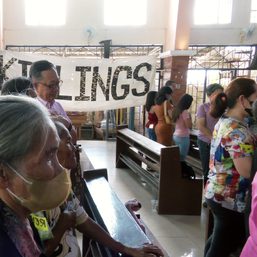SUMMARY
This is AI generated summarization, which may have errors. For context, always refer to the full article.
MANILA, Philippines – The National Economic and Development Authority (NEDA) disclosed that the unemployment rate eased to 7% in 2011 from 7.3% in 2010 citing a strong 4.6% growth in wage and salary employment and a modest 1.5% growth in full-time employment.
Socioeconomic Planning Secretary Cayetano W. Paderanga Jr. said the country has a better unemployment figure compared to the United States, which had an unemployment rate of 8.3% in January 2012. But he explained that this is because the character of our economy is different from those of developed nations.
Before celebrating, it is important to note that Paderanga stressed that, though the Philippines may have fewer unemployed persons, the country does not compare favorably to developed economies in terms of underemployment.
Underemployment refers to those persons 15 years and above who are employed but seek additional work or want to work additional hours at the current job.
Underemployment increased from 18.8% in 2010 to 19.3 percent in 2011.
Still the economists heralded the drop in unemployment as a very positive development. Socioeconomic Planning Secretary Paderanga said government created more than a million jobs in 2011 according to data from the National Statistics Office (NSO).
NEDA added that the quality of jobs also improved as indicated in the Labor Force Survey (LFS) covering 51,000 households and conducted in compliance with international standards and guidelines prescribed by the United Nation’s International Labour Office.
Data showed out of the 61.9 million Filipinos aged 15 years old and over about 64.6% were in the labor force or economically active in 2011, up from the LFPR 2010 results of 64.1%.
In a statement, Paderanga said, “Last year, the country generated more employment from the previous year. Employment level rose by 3.2 percent or 1.156 million, largely on the strength of the continued growth in services and the recovery in agriculture, although there was a slowdown in the industry sector.”
Paderanga expressed optimism that the increase in workers combined with government investments in infrastructure would boost the economy this year.
He explained, that the government’s flagship Public Private Partnership program, will enable small and medium enterprises to attain “economies of scale” in their operations and as a result allow them to hire more workers.
“Infrastructure investments will actually go a long way because when you connect the economy, then our own small businessmen will have a bigger market to look at and therefore we may start attaining economies of scale, although this means more competition among them but we think in the end it will be good for everybody that they become more productive,” Paderanga said. – Rappler.com
Add a comment
How does this make you feel?


![[OPINION] ‘Some people need killing’](https://www.rappler.com/tachyon/2024/04/tl-some-people-need-killing-04172024.jpg?resize=257%2C257&crop_strategy=attention)







![[EDITORIAL] Sorry Arnie Teves, walang golf sa kulungan](https://www.rappler.com/tachyon/2024/03/animated-arnie-teves-arrest-carousel.jpg?resize=257%2C257&crop=310px%2C0px%2C720px%2C720px)




![[Rappler’s Best] Patricia Evangelista](https://www.rappler.com/tachyon/2024/04/unnamed-9-1.jpg?resize=257%2C257&crop=486px%2C0px%2C1333px%2C1333px)

There are no comments yet. Add your comment to start the conversation.